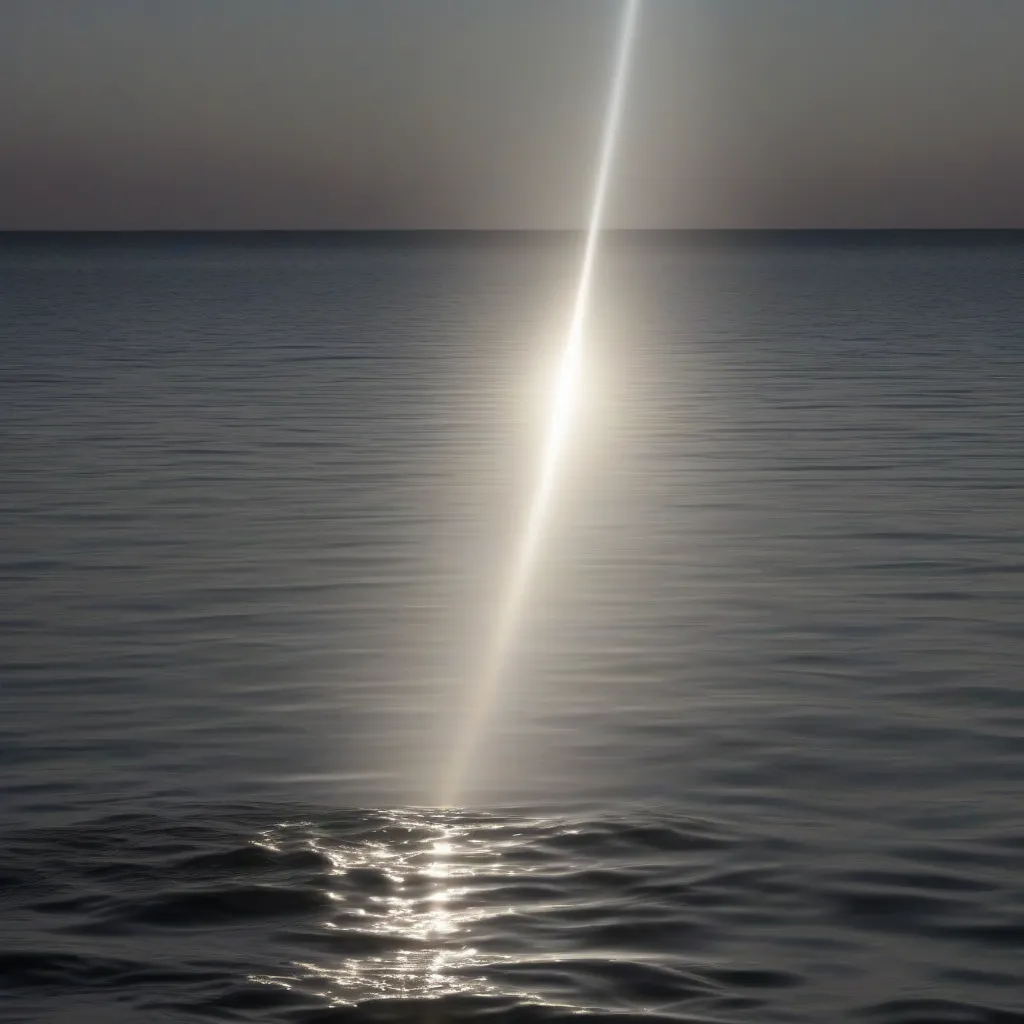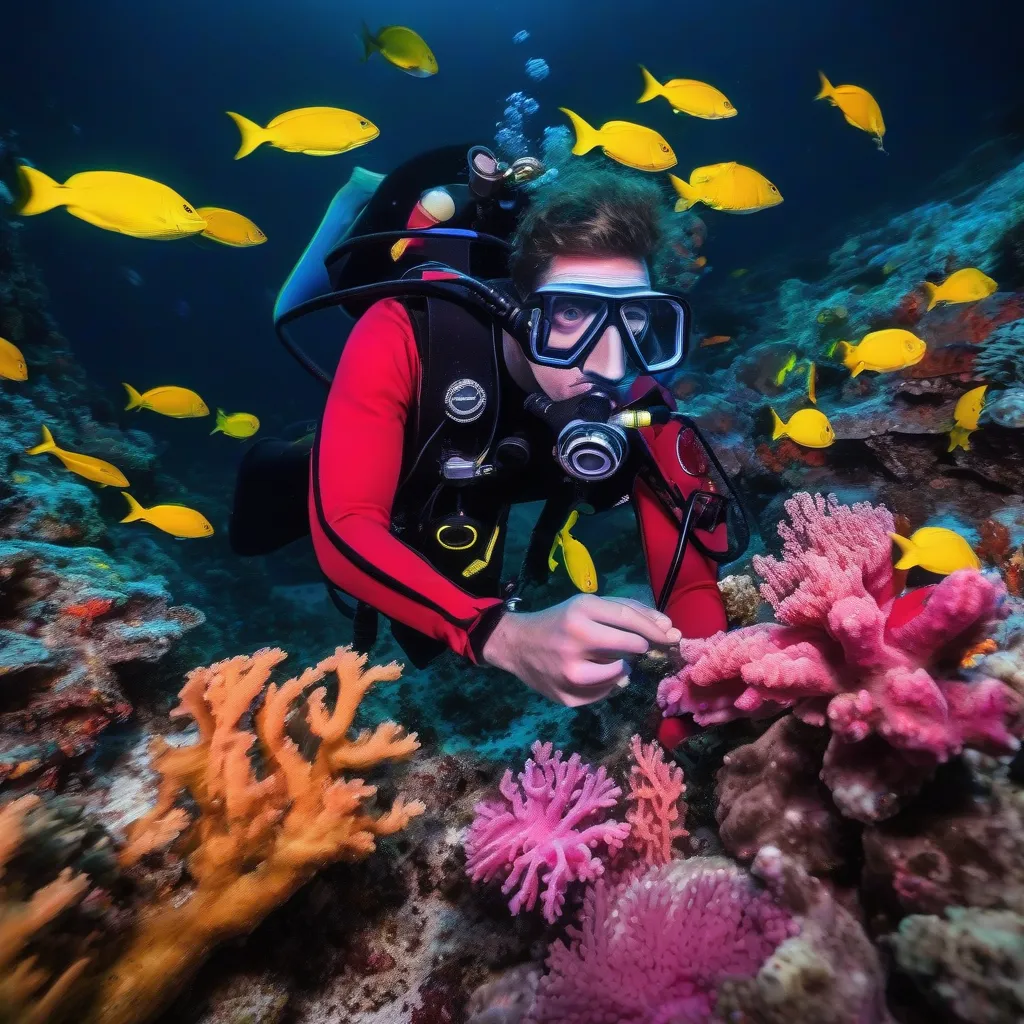Remember that time you were snorkeling in the crystal-clear waters of the Maldives, marveling at the vibrant coral reefs beneath you? Or perhaps you were scuba diving off the coast of Australia, mesmerized by the play of light on the Great Barrier Reef? Ever wondered how far that light actually travels through the water to reach your eyes?
Light, the very essence that allows us to perceive the world around us, behaves differently in water than it does in air. Its journey through aquatic environments is a fascinating interplay of physics and optics, influenced by factors like water clarity and depth.
The Science of Light in Water
In the vacuum of space, light travels at a staggering speed of approximately 299,792,458 meters per second, a universal constant often denoted as “c”. However, when light enters a denser medium like water, its speed decreases. This is due to the interaction of light photons with water molecules, leading to a phenomenon known as “refraction.”
The refractive index of a material, in this case, water, determines how much light bends as it passes from one medium to another. The refractive index of pure water is around 1.33, meaning that light travels approximately 25% slower in water than in a vacuum.
So, How Far Can Light Really Travel in Water?
The distance light travels in water is not a fixed value but depends largely on factors like:
- Water Clarity: Suspended particles like sediment, algae, and pollutants scatter and absorb light, reducing its penetration depth. Imagine trying to see through a murky pond versus a pristine mountain lake – the difference is stark!
- Wavelength of Light: Different colors of light, characterized by their wavelengths, are absorbed differently by water. For instance, red light is absorbed more readily than blue light, explaining why objects appear bluer at greater depths.
- Angle of Incidence: The angle at which light strikes the water’s surface also influences its penetration depth.
While there’s no single answer to how far light travels in water, it’s estimated that in the clearest of ocean waters, visible light may reach depths of up to 1,000 meters. However, most of the light is absorbed within the first 200 meters, known as the “photic zone,” where the majority of marine life thrives.
Travel and the Wonders of Light in Water
Understanding how light behaves in water can enhance our travel experiences, especially for those captivated by underwater adventures.
- Scuba Diving: Planning a dive trip to the Red Sea? Knowing that red light doesn’t penetrate deep can help you choose the right underwater lighting for your photography, capturing the vibrant colors of coral reefs in their full glory.
- Snorkeling: Exploring the clear turquoise waters of the Caribbean? Remember that the angle of the sun can affect visibility. Snorkeling during midday, when the sun is high, generally offers optimal viewing conditions.
- Boating and Kayaking: Even from the surface, appreciating the way light dances on the water, creating shimmering reflections, adds a magical touch to any boat tour or kayaking adventure.
FAQs About Light in Water
Q: Why does the ocean appear blue?
A: The ocean appears blue primarily due to the scattering of sunlight by water molecules. Blue light, with its shorter wavelength, is scattered more effectively than other colors, giving the ocean its characteristic blue hue.
Q: Can artificial light sources help us see deeper underwater?
A: Yes, artificial light sources, such as underwater torches and dive lights, can extend our vision underwater by providing a concentrated beam of light. However, even with artificial light, visibility is still limited by water clarity and the scattering of light.
Q: Does light pollution affect marine life?
A: Yes, light pollution from coastal cities and towns can disrupt the natural behavior patterns of marine organisms, particularly those that rely on moonlight and starlight for navigation and reproduction.
Embracing the Beauty of Light and Travel
From the sun-kissed beaches of Bali to the glacial lagoons of Iceland, the interplay of light and water paints a breathtaking tapestry across our planet. As we travel and explore, let’s marvel at these natural wonders, appreciating the science that underpins their ethereal beauty.
Did you know that according to renowned marine biologist Dr. Sarah Jenkins, author of “Ocean’s Embrace,” “Understanding the behavior of light in water is key to unlocking the secrets of marine ecosystems”?
For more travel inspiration and tips on exploring the world’s most captivating destinations, be sure to check out other insightful articles on TRAVELCAR.edu.vn, including our guides to A Davis Travel and Are Flights More Expensive on Chase Travel.
 Light Refraction in Water
Light Refraction in Water
 Scuba Diver Exploring Coral Reef
Scuba Diver Exploring Coral Reef